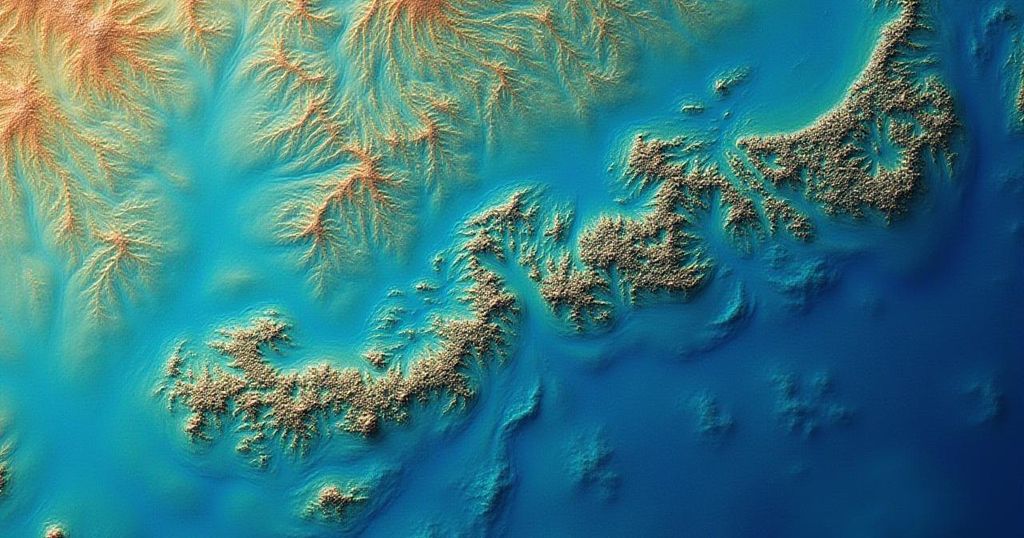The Alarming Consequences of Climate Change: Insights from NASA’s Satellite Observations
The year 2024 has brought unprecedented climate extremes, including record temperatures and severe storms driven by global warming. NASA’s climate satellites are essential tools for monitoring these changes, which severely threaten coastal towns. The Intergovernmental Panel on Climate Change warns of significant sea-level rises by 2100, advocating for urgent action to address the impending crisis.
The unprecedented climatic events of 2024 have drawn significant attention to the escalating threats posed by climate change to coastal communities. In July of this year, Earth recorded its highest average temperature in over 175 years, with July 22 marking the hottest day ever noted. This Northern Hemisphere summer was the warmest since 1880, coinciding with the emergence of Hurricane Beryl, the earliest recorded Category 4 hurricane. In South Africa, the winter season was characterized by staggering rainfall coupled with unusual weather phenomena, including snowfall in certain regions. A report published in June further validated concerns regarding human-induced global warming, revealing alarming rates of temperature rise. As highlighted by Space.com, this anthropogenic climate change is leading to unprecedented glacier melting, which in turn is contributing to rising sea levels. The implications for coastal communities are dire, with increased susceptibility to destructive storms and the displacement of wildlife from their habitats. In recent weeks, Hurricanes Helene and Milton have wreaked havoc on the southeastern coast of the United States and South Florida, respectively, with their intensity being closely linked to climate change. In response to the growing crisis, NASA and various space agencies are utilizing cutting-edge climate satellites to monitor the drastic effects of climate change on weather patterns. Employing satellite gravimetry—a technique that allows for precise measurements of ice mass loss, rising oceans, and changes in groundwater—scientists are revealing the full scope of the threats facing global coastal towns. Cedric David, a scientist at NASA’s Jet Propulsion Laboratory, remarked on the groundbreaking capabilities of satellite technology, stating, “Satellites can see what we cannot with our own eyes: changes in deep underground water storage that would require us to dig deep in the ground to witness firsthand. That is just mind-blowing.” With consultant predictions from the Intergovernmental Panel on Climate Change estimating a potential sea level rise between 0.43 meters and 0.85 meters by 2100, the situation appears dire for coastal regions. Scientists emphasize the critical role of data obtained from climate satellites as invaluable evidence in influencing crucial climate-related policy decisions aimed at reducing pollution and mitigating global warming impacts. David further stated, “We have had a series of radar altimetry satellites circling around our Earth in constant operation since 1992 that have allowed us to see the undeniable: Oceans are in constant rise. The 30-year-long curves of sea level rise are unquestionable evidence that our climate is changing.” In light of these findings, residents of coastal communities are advised to increase their preparedness for extreme weather conditions by implementing necessary climate-resilient measures in their homes.
The article provides an overview of the alarming climatic changes experienced globally in 2024, focusing on record high temperatures, severe weather patterns, and the effects of climate change on coastal towns. It underscores the role of satellite technology in monitoring these changes and highlights the urgency of addressing human-induced climate impacts in a bid to safeguard vulnerable communities along coastlines.
The evidence presented underscores the escalating threats posed by climate change, particularly to coastal communities. As the situation continues to deteriorate, it is imperative for policymakers and residents alike to recognize the urgent need for intervention and preparation in order to mitigate the dangers of rising sea levels and extreme weather events.
Original Source: www.2oceansvibe.com




Post Comment